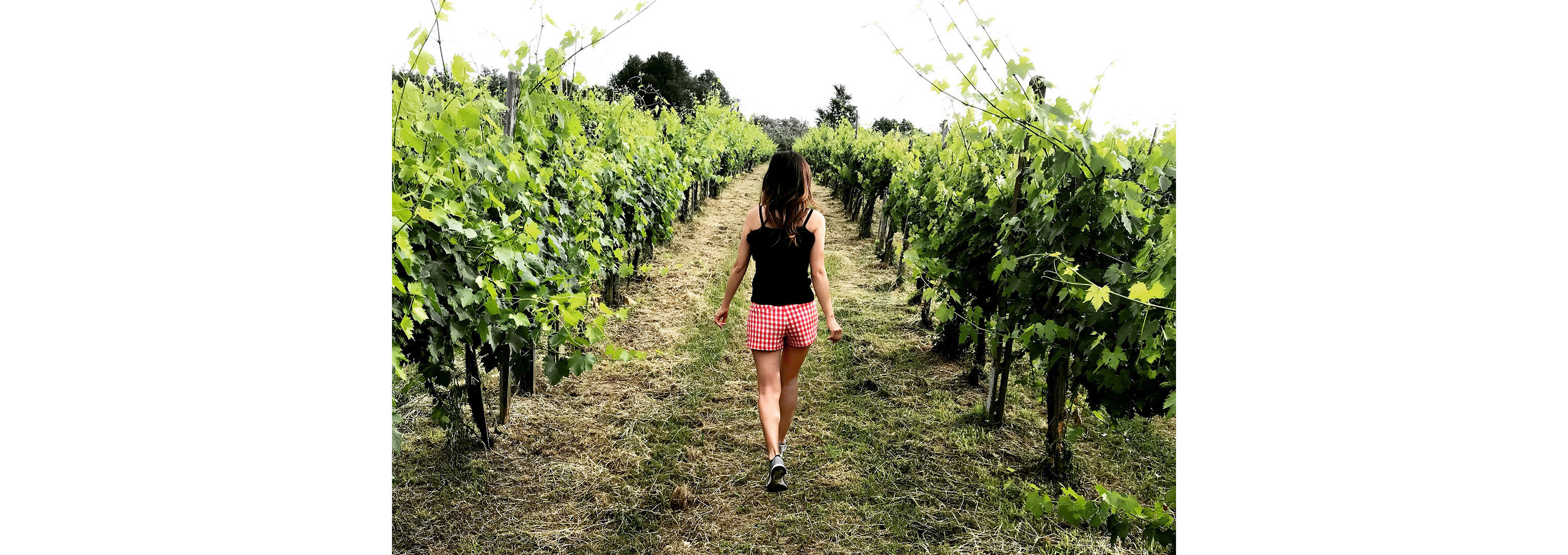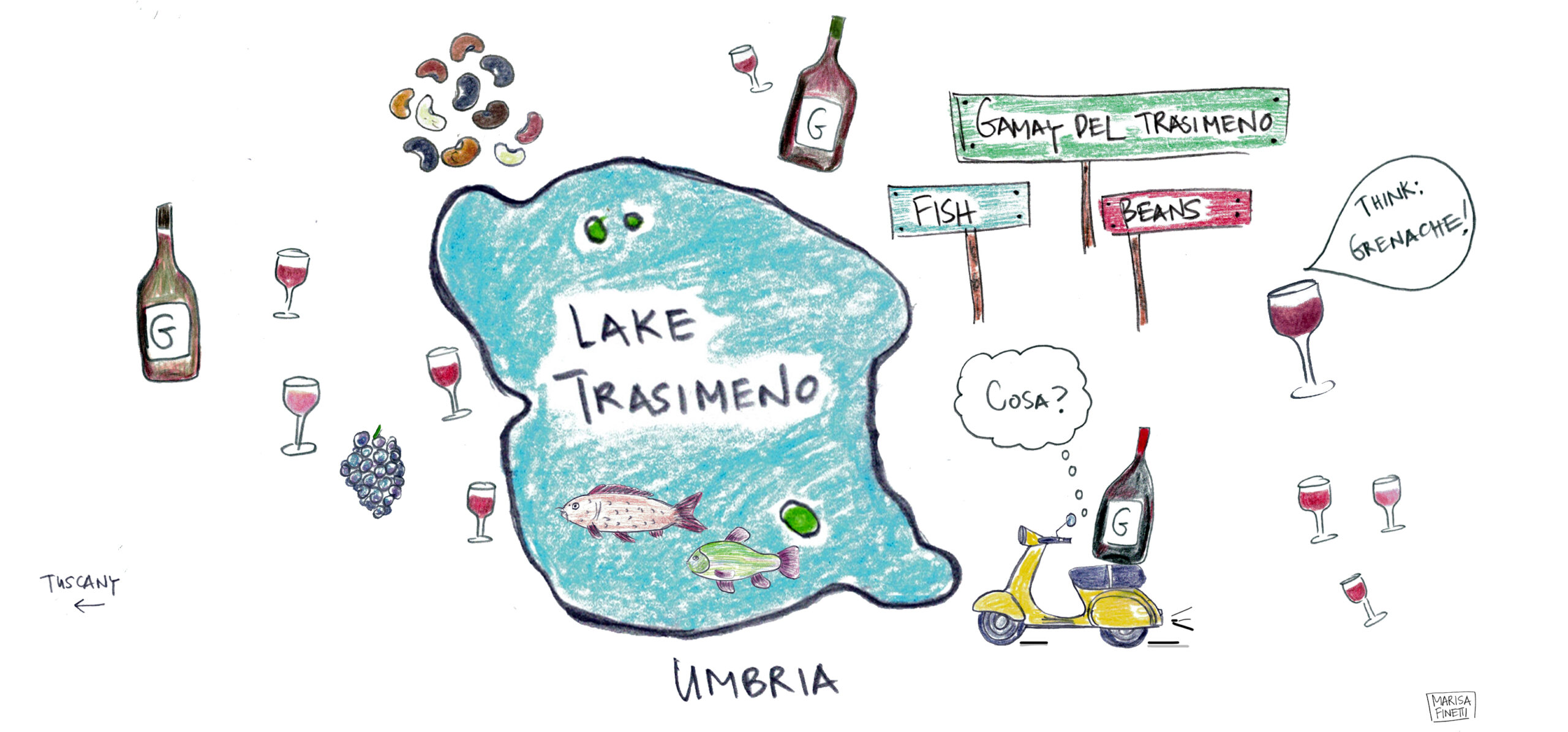Even a seasoned traveler may skirt past the shores of Lake Trasimeno to discover the better-known wine regions of Umbria, like Montefalco (home to the Sagrantino grape) and Orvieto (known for their historic white blends). However, the land around Lake Trasimeno, located in the northwest pocket of the “green heart of Italy,” offers charming discoveries of a grape and wine curiously called Gamay del Trasimeno, a bean saved from extinction, and a bounty of lake fish prepared like game.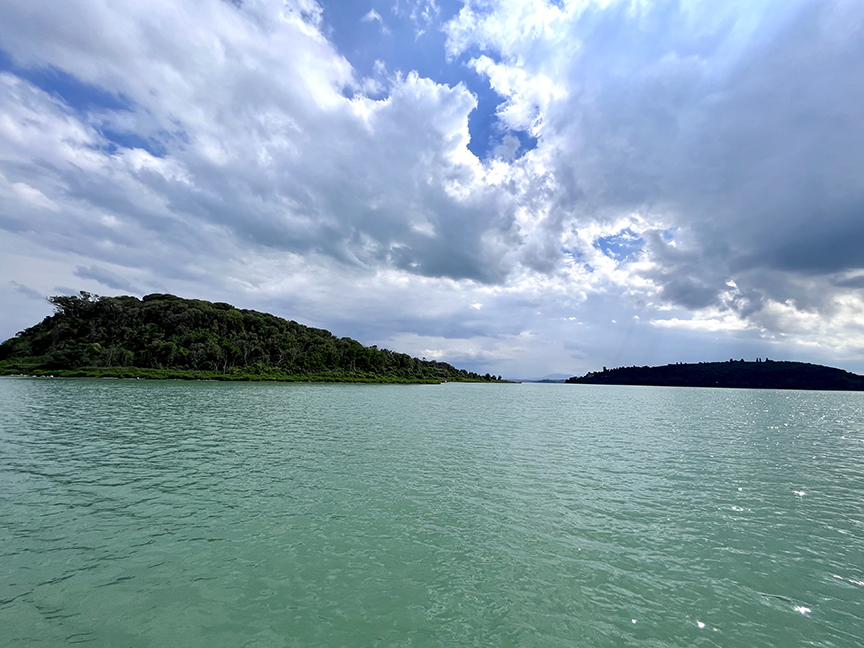
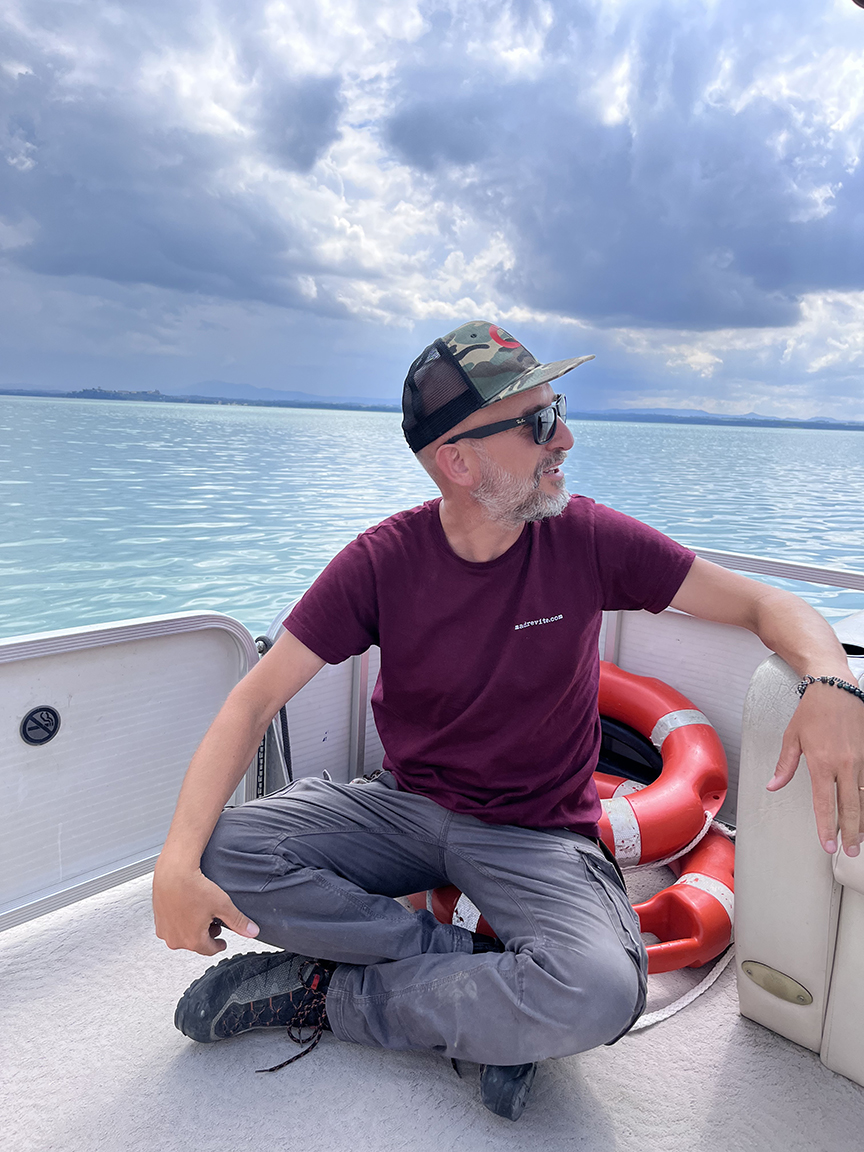
As calm and blissful as the lake was on this day, there was no better person to offer a historical snapshot of Lake Trasimeno and the surrounding hillsides than local wine producer Nicola Chiucchiurlotto of Madrevite. While sitting at the bow on the floor of the pontoon boat, Nicola pointed to the northern shores of the lake to mention the battle of Lake Trasimeno, when in 217 bce Hannibal and his Carthaginian troops faced off against the Roman army. According to Roman historian Titus Livius (Livy) the massacre was so brutal that neither army noticed the earthquake that shook the ground during the battle, destroying nearby cities and changing the landscape. (Livy, Ab urbe condita, 22.5) History was recorded and so was the creation of the lake by geologic fractures and earthquakes.
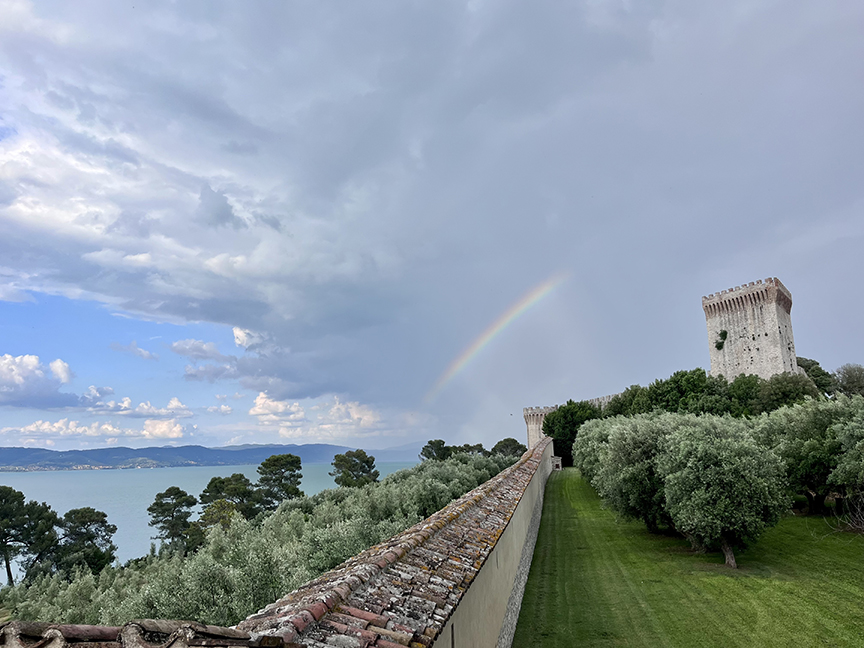
Today, the shores are surrounded by picturesque vineyards, vegetable farms, olive groves, castles, and towers. The lake is placid despite an imposing summer storm seen a few miles away. The shimmery reflections into the shallow blue waters remind me of last night’s meal where a local restaurant in the historic center of Castiglione del Lago, Ristorante L’Acquario, served smoked tench mousse, lake fish flan, pike carpaccio, marinated eel, crayfish, and carpa in porchetta alongside Madrivite wines. The table was very “Trasimeno,” as one would expect Italian cuisine to not just be regional, but hyper-location specific.
Seafood dishes at Lake Trasimeno are prepared in a heartier, meatier style, such as carp with a savory stuffing of rosemary and fennel seeds, reminiscent of the preparation used for stuffing pork, hence the name “Carpa in porchetta.” Perhaps because historically, locals in the area preferred eating farm animals, such as rabbit and game over fish. 
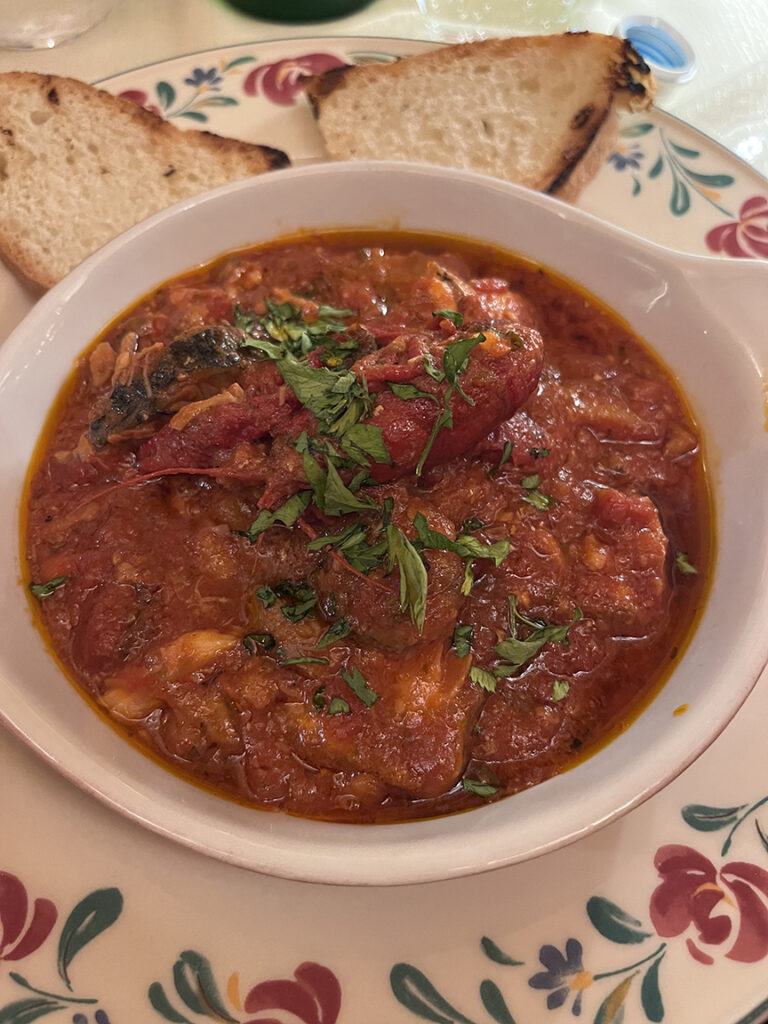
All the dishes paired deliciously with the wines presented by Nicola, including his Gamay del Trasimeno. Not to be confused with Gamay, the grape from Beaujolais, it is actually a biotype of Grenache. According to Nicola, recent genetic research carried out at the University of Perugia proved it to be the same variety (“same” is a loose word here. We’re talking about Grenache that is unique to Umbria) known in other regions of Italy as Cannonau in Sardinia, Tai Rosso in Veneto, Bordò in Marche and, in other countries, as Spain (Garnacha), and France (Grenache).
And, while it may not technically be an autochthonous Italian grape, after so much history in the area, it is described as a traditional and historical grape of Lake Trasimeno.
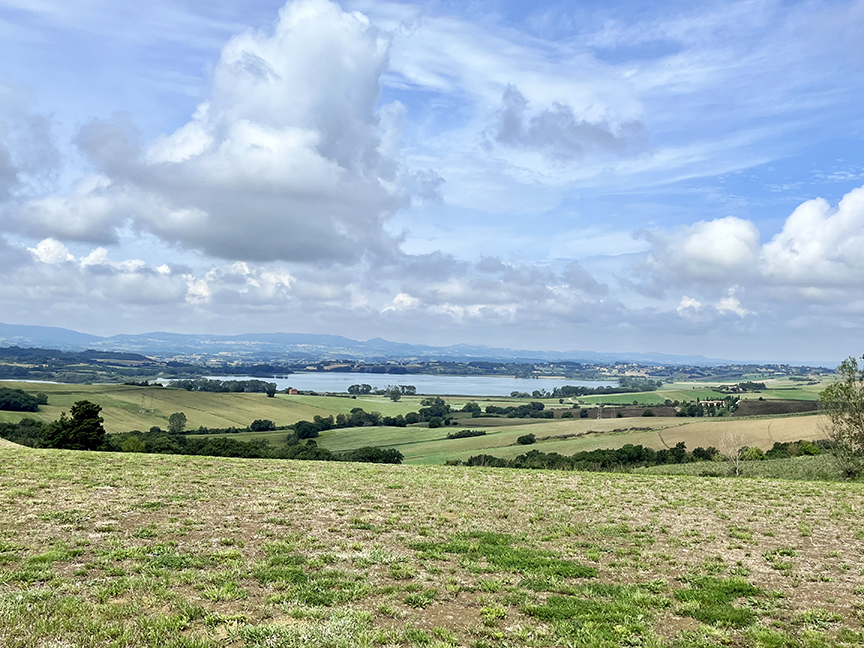
Madrevite’s vineyards owe much to Nicola’s grandfather, Zino, who started the family’s sustainable agricultural tradition in the 1970s.
“For me, being an organic farm today means doing something out of love, believing in an ethical and sustainable approach, for us and for those who will come after us,” Nicola says.
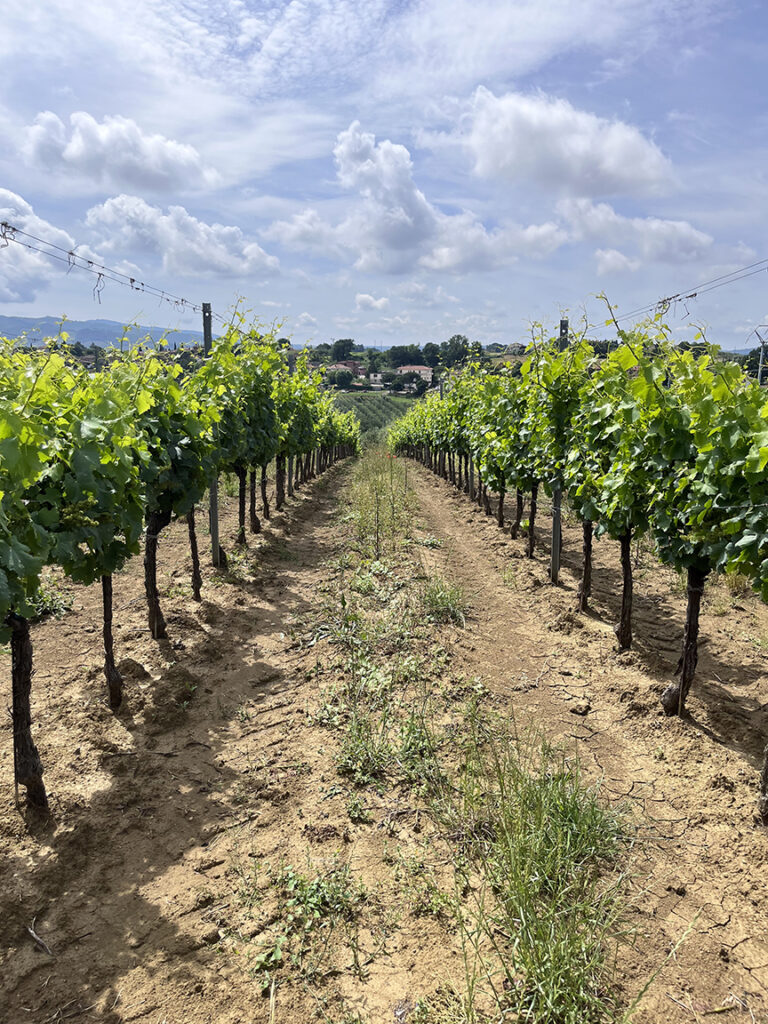
While Nicola’s grandfather and others in past generations have always called it Gamay del Trasimeno, one can relate to Nicola’s battle of selling his wines with a convoluted history and confusing name. But for him, it is important to respect the past and cast a spotlight on this wine with a spirited approach to showcase a special part of Umbria.
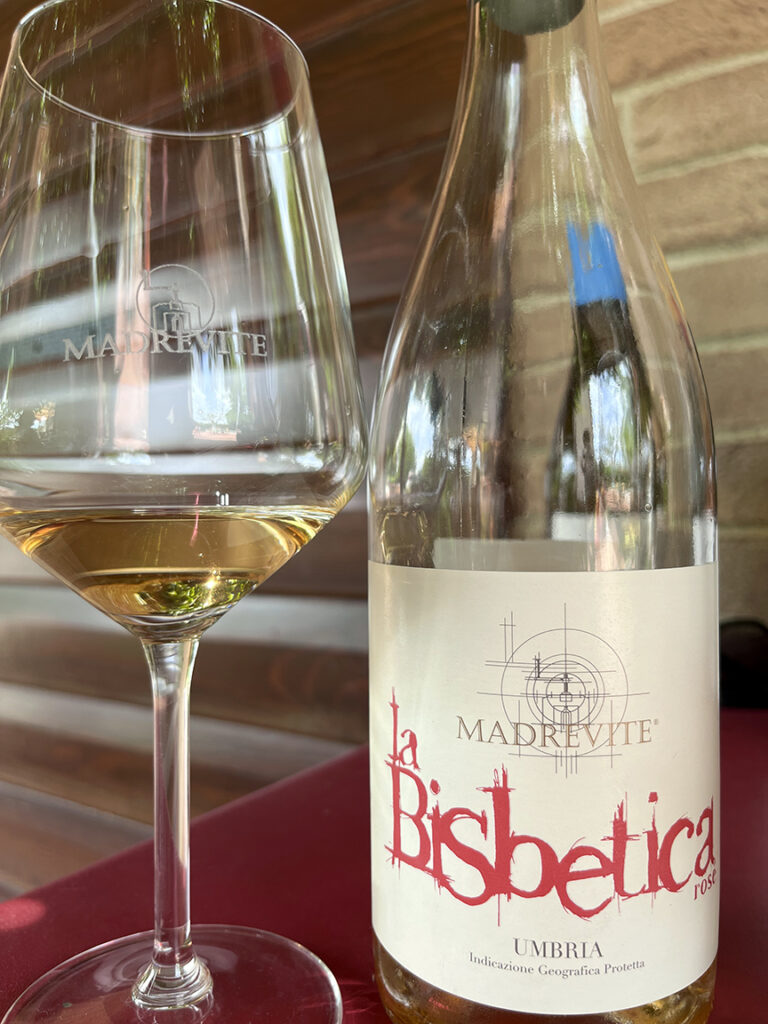
Our meals with Nicola featured pairings with Madrevite’s “La Bisbetica” Umbria Rosato IGT, a 100% Gamay del Trasimeno rosé expression. Orangey-pink in color, it offers a bounty of cherries and raspberry bramble on the nose, it is fresh and crunchy, bright on the palette, flirting with anything served with it, such as a classic Panzanelle salad or simply bread with shavings of black truffle, just harvested. Nicola.
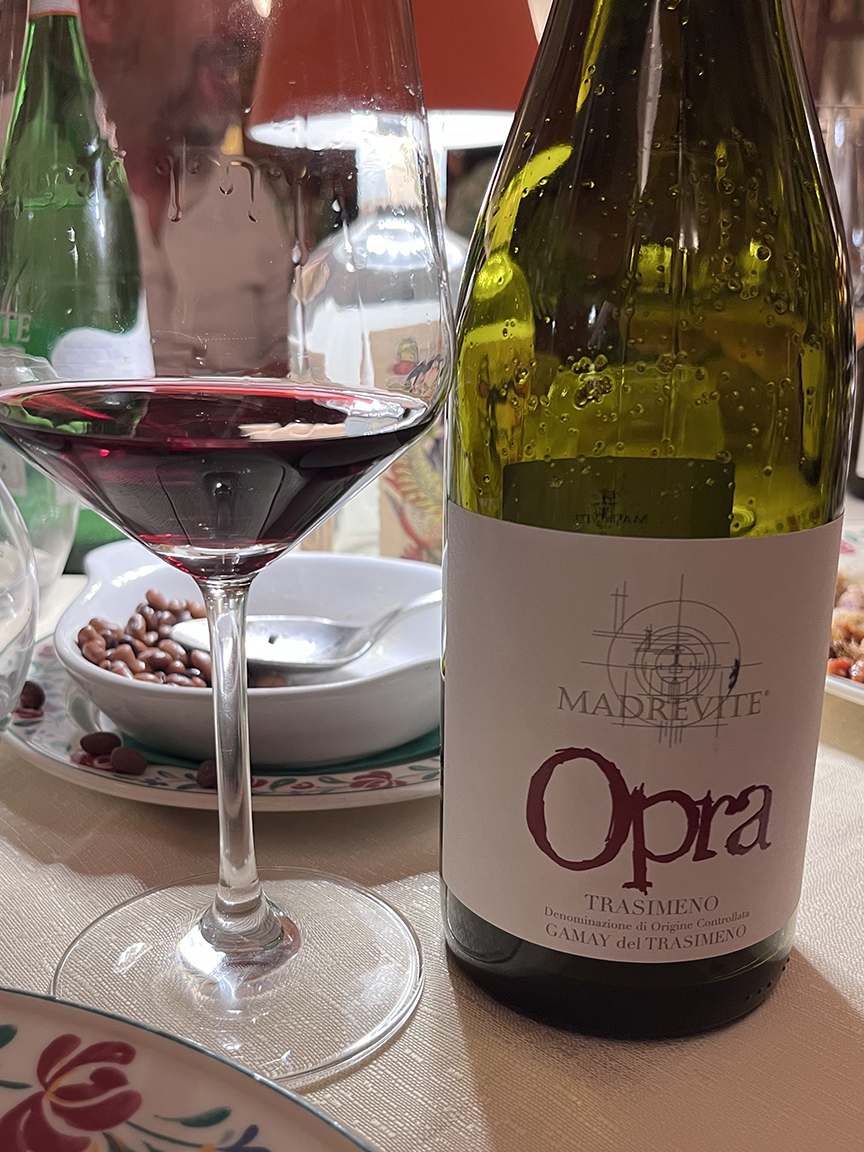
Madrevite “Opra,” Trasimeno DOC is 100% Gamay del Trasimeno. Red fruit-driven aromas and dry roasting herbs lead to rich black plums and blueberries with savory earth notes. Great structure and fine-grained tannins leave a lasting impression. Excellent with Trasimeno lake fish or tomato-based pasta dishes, but most memorable with something as pure as the local bean, Fagiolina del Trasimeno.
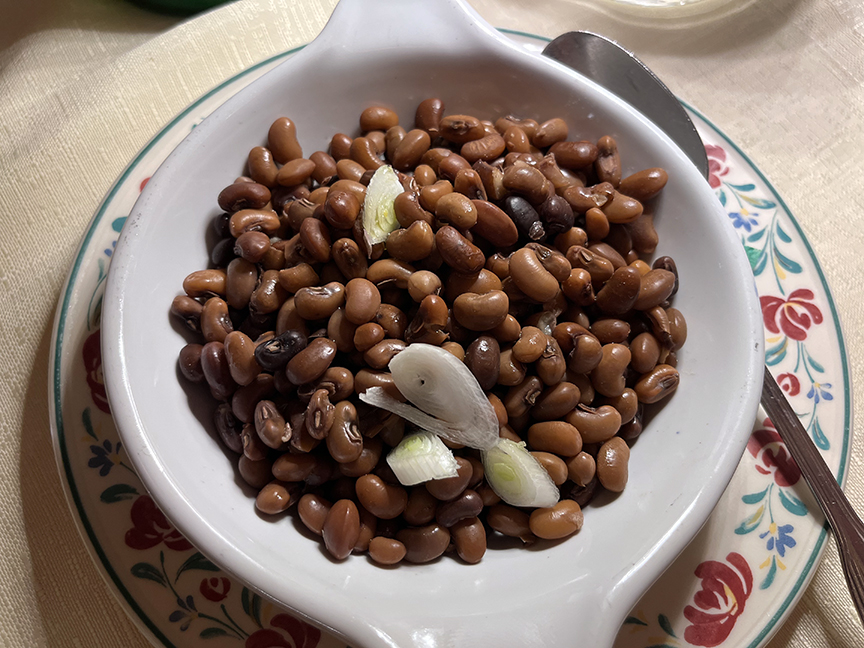
Once cultivated by the Etruscans, the bean of Trasimeno was grown for centuries on the land around the lake and grew in popularity until the 1950s. Since then, it has almost completely disappeared. The lengthy and laborious cultivation process is partly to blame. But thanks to local producers like Nicola, the bean has re-emerged, gaining its Slow Food honor that encourages its use and preservation. The tiny, oval bean comes in a range of colors, from cream to black, pinkish salmon, and many shades of brown, and is sometimes speckled. When cooked, the beans are tender, buttery, and particularly flavorful for their size. They are best eaten boiled, seasoned simply with a little local extra-virgin olive oil.
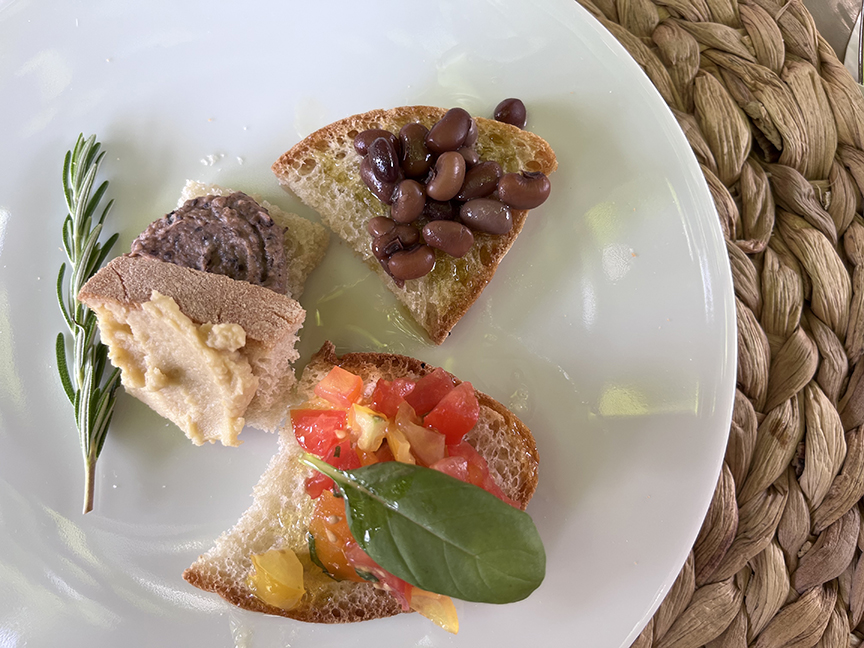

And finally, the C’osa Colli del Trasimeno Riserva DOC, Madrevite’s full-bodied 100% Gamay del Trasimeno. Intriguing all around with a sweet clove, cinnamon, and blood orange leaning toward broody, dark fruit. A great wine to contemplate the bounty and tranquility of Lake Trasimeno.
Wedged in the central Italian countryside, Lake Trasimeno is indeed a hidden gem. Where once the center of one of the largest ambushes in Roman military history, the area today shimmers beyond the banks to the silvery green olive leaves on the hills that surround it. The beauty is indulging in the delicacies and wines that are unique only to this place and wildly different from its neighbors.
